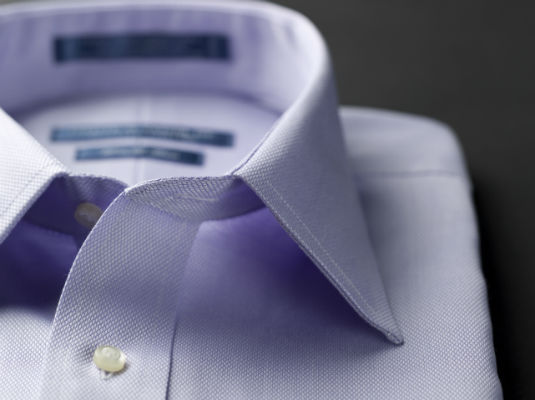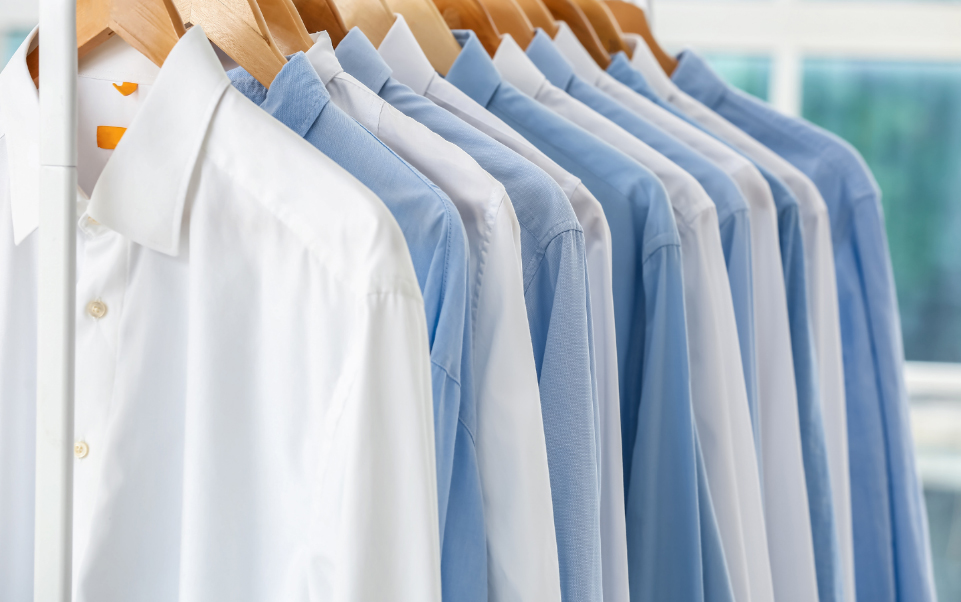When we professionally launder or dry clean your shirts, you can rest assured they will come back to you crisp and clean. We inspect every shirt prior to cleaning and sort it based on color and material composition. Any shirts with stains or dirty collars are pre-spotted prior to laundering. Our process involves laundering shirts using our premium detergent to keep colors from fading. We then use a shirt press that looks similar to a mannequin to press the body of the shirt as well as the cuffs and collars. Lastly, we inspect every shirt to replace any loose & broken buttons or iron out any wrinkles we missed the first time through.
To starch or not to starch?
The preference for starch really depends on the you. Starch is added to the washer when shirts are laundered. Shirts that are 100% cotton hold starch best. When there’s a blended fabric such as 60% cotton and 40% polyester, those shirts are unable to “hold” the starch as well and may feel unstarched, even though they’ve been treated with starch.
Starch adds stiffness to your shirts. Many people like the crisp look that starch give their clothes. The downside of starch is that it shortens a shirt’s lifespan since it weakens the fibers of the shirt and buttons causing them to crack more easily. The other concern is that shirts wrinkle more readily when they are starched.
Shirt lifespan
The typical men’s dress shirt is meant to last about 52 washes (which is usually the equivalent to wearing the shirt every other week for 2 years). Depending on the fabric, weave construction, and your starch preference, this number could be longer or shorter. If you look at your cuffs and collar and notice small tears, it’s probably time to purchase a new shirt. Oftentimes, we see older shirts with “dry rot.” This occurs when the fabric is weakened from wear and the agitation in the cleaning process causes the shirt to tear. We can tell when a shirt is dry rotted because when you pull slightly on a tear it rips very easily.
Using a professional shirt service is the best way to save yourself time. The final product of a professionally laundered shirt cannot be compared to home ironing. Give it a try and see the difference!








